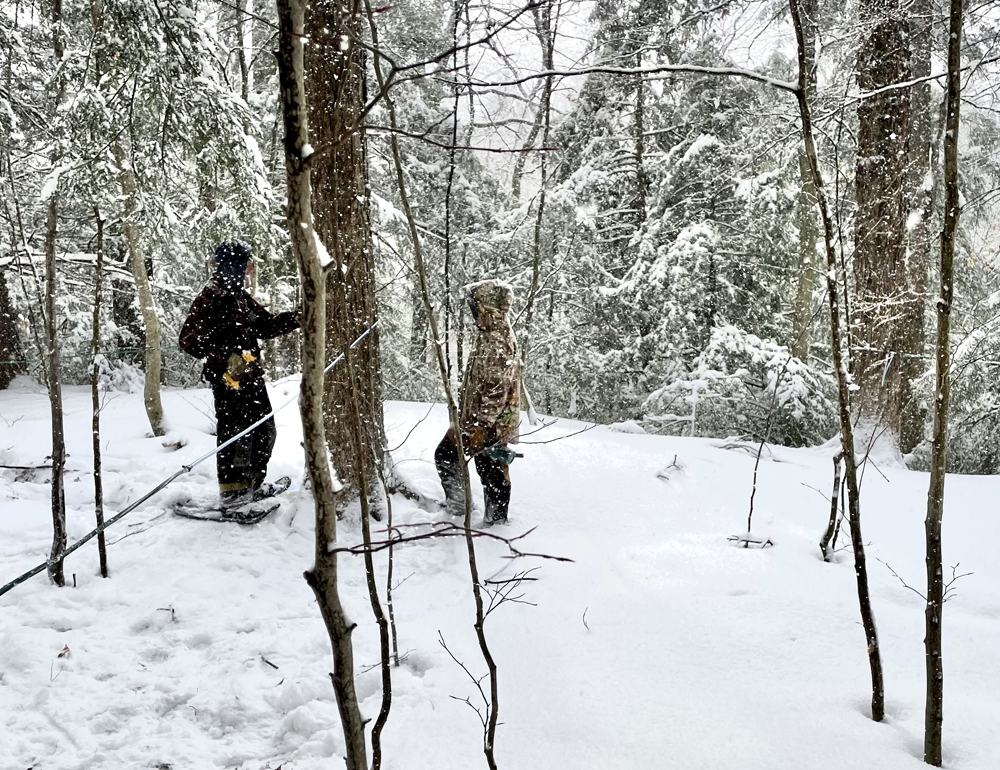Programs
Schoolyard Sugaring
In the Sugarbush

The production of maple syrup starts in the forest with the trees. Maple farmers first start taping a maple tree when it is around 10 inches in diameter or 31 inches in circumference. It can take a maple tree 40 years to grow from seed to be big enough to tap. Once a tree is tapped, maple syrup producers need to collect approximately 40 gallons of maple sap to make one gallon of maple syrup. On average, each tap provides roughly 10 gallons of sap throughout a maple season which, when processed, yields roughly a quart of pure maple syrup.
The following resources are helpful guides covering the concepts, processes, research, and best practices found within the maple sector and helpful for beginners and intermediate maple hobbyists with the processes that happen in a maple woods or a sugarbush.
Sugarbush Vocabulary
Maple syrup production has its own unique equipment, processes, and vernacular or language. The vocabulary resource will help you familiarize yourself with many of the terms used within a sugarbush.
Technical Resources
How to identify and manage the health and productivity of a sugarbush
Learn about the things that should be considered when managing a forest for maple syrup production. The majority of forest management planning is best done in the summer and fall when leaves are still on the tree.
Identifying Maple Trees by Leaves, Bark, and Twigs
Learn how to identify maple trees for maple syrup production.
How Sap Flows
Learn about the science of sap flow in maple trees and the importance of “freeze thaw” cycles in maple sugaring.
Tapping Maple Trees and Sap Collection
Overview of tapping of a maple tree, vessels for collecting maple sap, and how to store sap before processing.
Tapping Pattern for your Sugarbush
Best practices in tapping over multiple seasons.
How to Tap a Maple Tree
Demonstration of how to tap a maple tree. ( 5/16th maple tapping bit used in the video is included in the maple starter kit.)
Types of Taps and Containers for the Collection of Maple Sap
Overview of different types of taps and maple sap collection systems that are used in the maple sector.
Tapping with Sap Bags for Sap Collection
How to tap and install sap bag systems. (Sap bags and sap bag holders used in the video are included in the maple starter kit with additional sap bags provided by NYAITC upon request in registration.)
Tapping with Buckets for Sap Collection
How to tap and install bucket sap systems.
Tapping with Tubing Systems for Sap Collection
How to install a five-tap tubing sap system.
Additional Maple Production Resources
Cornell Maple Program
Find resources covering many concepts, processes, research, and best practices found within the maple sector.
Cornell Maple Program Website
An ever-updating resource to stay up to date with current maple news, resources, and tools.
University of Vermont Proctor Maple Research Center
Resources cover many concepts including processes, research, and best practices found within the maple industry.
Texts for Maple Production
Cornell Maple Production for Beginner's Notebook
Maple researchers from Cornell University put together this step-by-step guide which contains concepts, processes, research, and best practices for those who are new to the production of maple syrup and those who want to grow their existing maple syrup operations.
The Sugarmaker's Companion
Maple farmer and researcher Mike Farrell’s production guide for developing a maple operation from sugarbush to value added products.
North American Maple Syrup Producers Manual
University of Vermont in Cooperation with The North American Maple Syrup Council created an extensive science-based guide for the production of maple syrup from hobbyists and beginner producers to large scale maple syrup operations.
